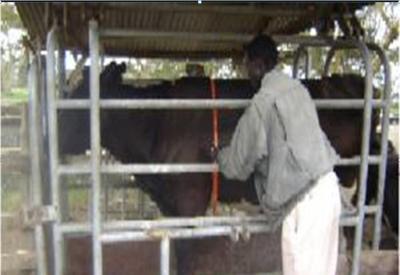 Wheat farmers in Rift Valley are decrying the growing threat of stem rust that is wiping up to 100 per cent of their yields and thwarting efforts to increase wheat production by attacking even superior wheat varieties.
Wheat farmers in Rift Valley are decrying the growing threat of stem rust that is wiping up to 100 per cent of their yields and thwarting efforts to increase wheat production by attacking even superior wheat varieties.
Farmers like Simon Ng’ang’a who have been in wheat production for the last one decade cannot take the losses anymore,
Thie disease has also threatened the over half a million metric tons a year wheat yield that the Kenya produces.
Ng’ang’a’s 5 hectares of the high-yielding, disease resistant “Robin” wheat variety was struck by a new strain of stem rust disease and reduced to waste.
“I was expecting to earn something to put in my pocket to give to my family, to encourage my children so they can be farmers like their father,” he said.
“Now they see how I’ve done they’re going to go for other jobs, but this was the job I was thinking they could do because I have the machinery to work the field.”
Wheat is the second most important crop in Kenya after maize.
The stem rust that destroyed Ng’ang’a’s crop, a sister strain of the dangerous Ug99 rust so named because it originated in Uganda, chokes plant nutrients in the stem, preventing the proper formation of wheat kernels. Epidemics of the disease can cause severe losses.
Ng’ang’a was growing Robin, a wheat variety developed by breeders at the International Maize and Wheat Improvement Center (CIMMYT), tested at the Kenya Agricultural Livestock & Research Organization (KALRO) and released to farmers to plant in their fields.
It’s a hardy variety, said wheat breeder Sridhar Bhavani, who heads the CIMMYT stem-rust screening nurseries in East Africa.
Older wheat varieties that farmers grew in the area were yielding about 4.5 metric tons per hectare, but improved varieties such as Robin now produce a yield up to 30 percent higher depending on farm management practices, Bhavani said.
“We’ve been racing to try and combat stem rust, to prevent the spread of the disease by breeding wheat varieties that contain resistant genes. The temporary solution is to spray fungicide,” he said.
“The reason Simon lost his crop is because he was not aware of the new race and failed to apply fungicide at the correct time and dosage, stem rust can cause losses of up to 100 percent.”
Ug99 has so far been detected in Ethiopia, Eritrea, Iran, Kenya, Mozambique, Rwanda, South Africa, Sudan, Tanzania, Uganda, Yemen and Zimbabwe. International scientists, governments and policymakers have been working under the umbrella of theBorlaug Global Rust Initiative project to develop disease-resistant varieties that governments can release through their National Agricultural Research Systems (NARS).
The aim is to develop and release disease-resistant wheat varieties that can be planted in about 5 percent of primary risk areas in all countries. The major fear among scientists is the potential impact of Ug99 if it spreads into the Asian breadbasket of India and China.
“The migration of this disease across geographical borders has an important significance because it indicates it’s widespread and can affect wheat production and food security on a global scale,” said Bhavani, who spends most of his working hours at the quarantined KALRO test site not far from Ng’ang’a’s farm in the Njoro region.
“We’ve now identified eight variants within the Ug99 lineage throughout Africa, showing that Ug99 has a complex virulence to several genes previously believed to be resistant,” Bhavani added, pointing out some telltale rust-colored pustules on nearby wheat stalks.
To combat the threat of stem rust to wheat, as a line of defense for food security, scientists have developed and released 45 resistant wheat varieties. Most vulnerable countries have protectively produced Ug99 resistant varieties on at least 5 percent of their wheat-growing area.
Such resistance breeding in conjunction with fungicide has kept the spread of Ug99 disease in check so far.
















Comments powered by CComment